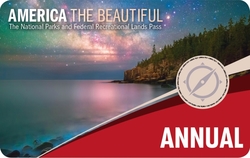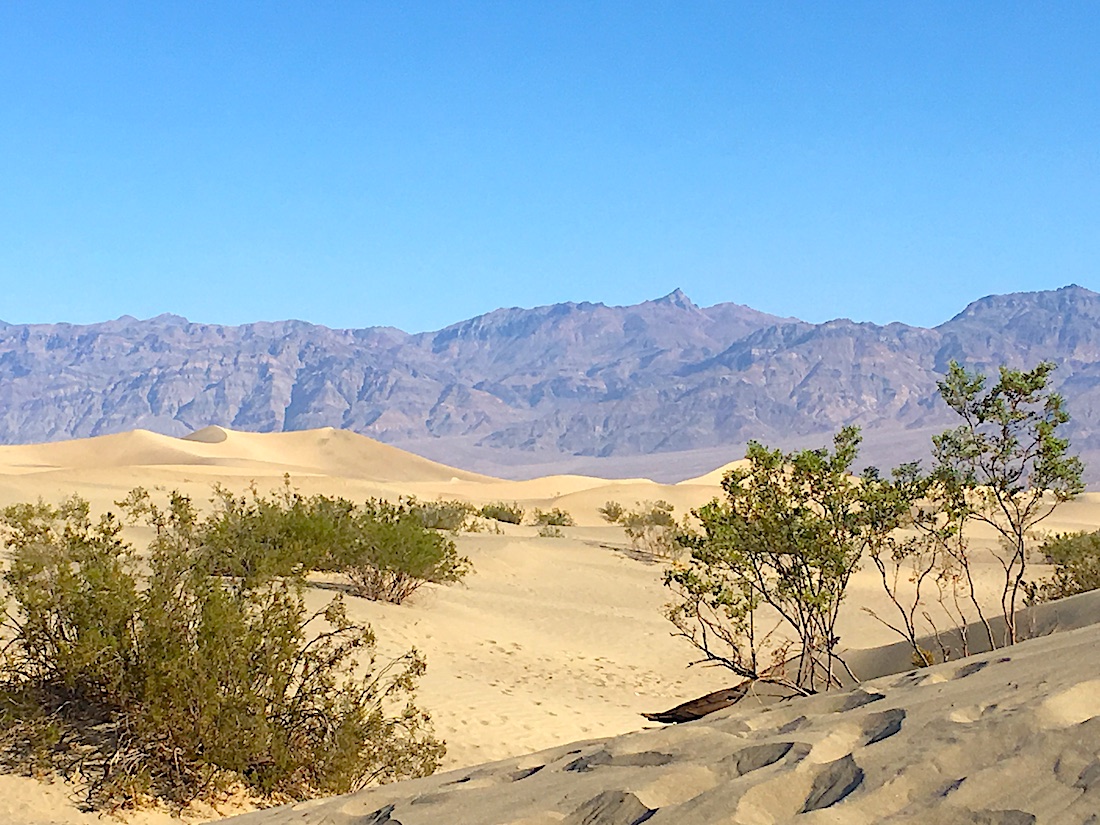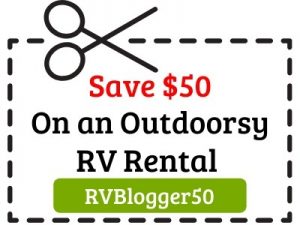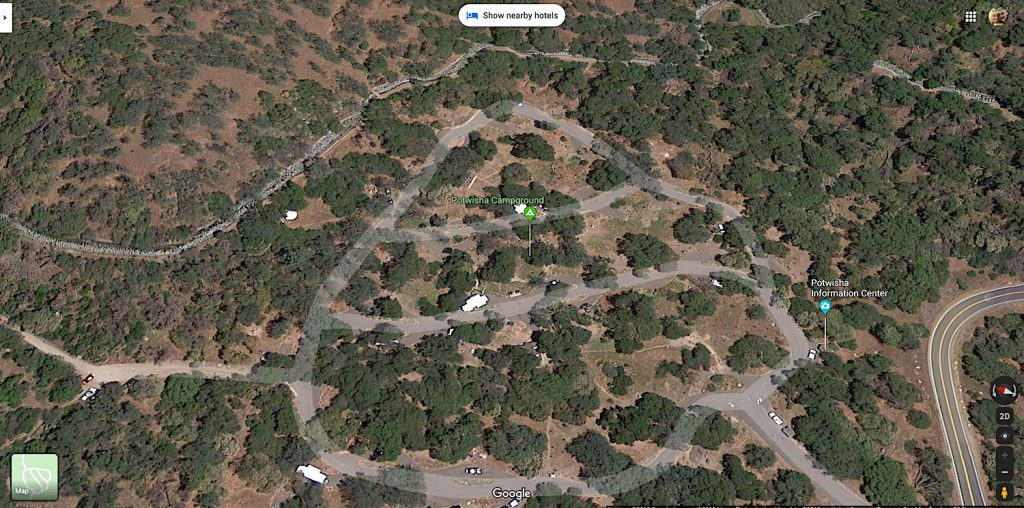Thanks for your support! If you make a purchase using our links in this article, we may make a commission. And, as an Amazon Associate, I earn from qualifying purchases. See the full disclosure here.
RV Camping in one of America’s national parks is always an incredible experience. Our 11 Best Tips for RV Camping in National Parks will tell you everything you need to know to secure an excellent campsite and enjoy these amazing places.
1. Choose The Best Time of Year to Visit
If you have a specific national park in mind to visit, determine the best time of year for exploring that park. It goes without saying that unless you are into winter sports, you probably do not want to visit Glacier National Park in January! Likewise, if you are going to explore Joshua Tree National Park, you will want to avoid the oppressive heat of the summer months.
Everyone wants to visit the parks when the weather is perfect. Finding a balance between great weather and peak tourist season is key to avoiding crowds. The peak season for each park will vary depending on the climate. In general, most national parks see their most significant number of visitors on weekends and during the summer months.
If you can be flexible on your travel dates, try to avoid holidays and peak travel times such as spring break and summer months. Visiting popular parks such as Yellowstone, Redwoods, and Arches National Park in May or September instead of June or July can make a big difference in your experience.
2. Make Reservations EARLY
Most popular national parks require reservations for camping. In general, most national park campsites can be reserved for up to six months in advance on recreation.gov. There are exceptions to this rule, and you will need to familiarize yourself with the reservation policies for the national parks that you plan to visit.
For example, Yosemite National Park camping reservations can be made five months in advance. The booking window opens on the 15th of each month at 7:00 a.m. If you plan to camp in Yosemite Valley, you will need to be online at this time to secure a reservation. Even then, obtaining a campsite is not guaranteed as so many people are competing for a limited number of sites.
Finally, you can always try to get a walk-up or first-come, first-served site when you arrive at the park. While not recommended, it is possible! If you decide to try your luck at securing a walk-up campsite, you will need to arrive at the campground early in the day. Speak with the ranger and take their advice as to which campgrounds and campsites may be available. Avoid arriving on the weekend, if at all possible. You will want to have the address or phone number of a private campground outside of the park on hand just in case you are unable to find a campsite in the park.
If you miss out on reserving a campsite at your preferred campground, you do have options. First, consider changing your dates and trying to make a reservation again the next month. Another option is to check the website daily for cancellations. Cancellations do happen, so keep checking and don’t give up. And finally, you can stay at a campground outside of the park and drive over to the park every day to visit. This may actually be the best way to get full hookups for your trip.
Check Out Some of Our National Park Articles Below for Campground Options:
- Ultimate Guide to RV Camping and Campgrounds in Joshua Tree
- Yosemite Lakes RV Resort Campground Review
- Best RV Camping In and Near Yosemite
- The Best RV Camping In (and Near) Yellowstone
- 6 Best RV Parks Near Kanab Utah
3. Make Sure Your RV or Travel Trailer Will Fit
While nearly all national parks offer RV camping, most campgrounds were designed to host tent campers and smaller rigs. Limited space and tight turns within the campgrounds and access roads make it difficult to fit larger RVs and travel trailers in these areas. Many parks have size restrictions and cannot accommodate larger RVs in any of their campgrounds. Other parks have limited spaces for large rigs.
The average permitted RV or travel trailer length in national parks is around 27 feet, although many parks have at least a few spaces for larger rigs. Some national parks, like Pinnacles in California, can accommodate almost any size RV.
If your RV or travel trailer is smaller than 27 feet, you most likely will have more options for campsites in all national parks. If your rig is bigger, you will have to search carefully for a campsite that will work for you. The best way to check out your options is to visit the National Park Service website for the park you want to visit. There you will find campground information, including size restrictions at each campground within the park.
Another helpful resource is recreation.gov. Most national park campground reservations are secured through this website. The site also has useful tools such as campground maps, lists of amenities at each campground, unique features of each campground, and detailed information on each campsite.
Once you have selected a campground with sites big enough for your rig, you can use recreation.gov to search for campsites by size, which is a helpful feature. Simply enter the length of your RV or travel trailer in the search feature, and it will find the sites that are best for you. Another option would be to check out RV campgrounds near national parks.
4. Book Your RV Early!
In addition to booking your plane tickets, campground, tours, and activities early don’t forget to book your RV rental as early as possible too! Why? Well, some national Park Campgrounds and Campsites have size restrictions and you want to make sure you can rent an RV that will fit where you are camping!
For example, Susan and I camped at Potwisha Campground in Sequoia National Park and that campground has a 20′ size limit! Luckily, we researched all of this before our trip and rented a 19′ Class C RV and we were able to fit. But – we had to book it early so we didn’t miss out.
We rented our RV from one of the big national RV companies but we wished we went with Outdoorsy because we would have gotten a better deal on the RV with everything we needed. If you are interested in renting an RV check out some of our articles about RV Rentals below:
RELATED READING: The Ultimate Guide to Renting an RV explains everything about RV rentals.For more specific articles check out these RV Rental articles below:
- How to Find Affordable Long Term and Monthly RV Rentals
- How to Find the Best Camper Trailer for Rent
- Renting a Pop Up Camper – A Complete Guide
- 15 Essential Rental Tips For First Time RV Renters
- 4 Best Rental Options for a Small Drivable RV
5. Choose the Perfect Campsite
First, keep in mind that there really is not a “bad” campsite in any of our national parks. If you are camping in the Yosemite Valley, I am sure you will have no complaints. But as we all know, some campsites are better than others, and we all want the best site in the campground!
The great thing about national park camping is that all of the campsites within a campground are the same price. National Park RV camping fees average $18-25 per night, depending on the park. You can select a great campsite without paying any more per night!
To find the perfect campsite for you, first, make sure that the site will accommodate your rig. Then, take a look at the campground map on either the National Park Service website or recreation.gov. Some things to consider when choosing a site include privacy, views, and access to the restrooms and other amenities.
Proximity to the restroom is essential to many campers. When camping in national parks, this can be of even greater importance as you will most likely not have any hookups at your campsite. Keep in mind that the areas near the restrooms will have more foot traffic, which means less privacy. You will most likely need to decide which is more important to you- the convenience of a location near the restroom or a quieter campsite.
Another great resource when selecting a campsite is photos of the sites. Recreation.gov provides pictures of most campsites online. Campsitephotos.com is another excellent resource for checking out campsite views and details. Many times users will rank the best campsites in the campground, and this information is useful when choosing your site.
With RV Trip Wizard you can actually plan your entire route, find the perfect campground and then get a top down view of every individual campsite to choose the very best one. I do this myself because I am VERY PICKY when choosing a campsite and RV Trip Wizard saves me a ton of time because rather than switching from website to website to GoogleMaps I can research everything in one place. In my opinion, it is the best planning tool on the market and I highly recommend it to all of our readers. Just click the link below to check it out for yourself.

Once you have your ideal campsite in mind, mark your calendar for the date the reservation window opens to make sure you can secure the site. You can be sure that the best campsites will go first, so be prepared!
6. Prepare for Dry Camping
One of the goals of our national parks is to help visitors experience nature without the noise and distractions of our modern world. Services such as WiFi and cell reception are usually minimal in the parks. The majority of national park campgrounds do not offer electricity, or water and sewer hookups.
In exchange for giving up these comforts, campers get to enjoy the natural beauty of the parks. Everyone needs to disconnect from time to time, and national parks are a great place to do so! Planning for a lack of services will make your trip a more pleasant one.
Nearly all national park campsites have a picnic table and fire ring. If you are camping in bear country, a bear box is typically provided as well.
If you need electricity for your camping trip, generators are allowed in most national park campgrounds. Keep in mind that generator hours are heavily restricted, and the rules for generator use are strictly enforced. Solar panels, portable solar chargers for your electronics, and solar lights can all ease the discomfort of dry camping.
Most national park campgrounds have a restroom, and some have showers at the campground or nearby. Be sure to review these features and their locations before booking.
We listed the campgrounds in National Parks with Full Hookups below but as you can see there just aren’t many options.
U.S. National Parks with Full Hookups for RVs (water, sewer, and electric)
Arizona
Grand Canyon National Park: Trailer Village
- 29 full-hookup sites for RV’s up to 28 feet long.
- 50 full-hookup sites for RVs up to 50 feet long.
California
- Furnace Creek: 18 full-hookup sites. Max RV size: 36’
- Stovepipe Wells: 14 full-hookup sites: Maximum RV size: 60’
- Panamint Springs: 6 full-hookup sites: Maximum RV size: 60’
Texas
Big Bend National Park: Rio Grande Village RV Park
- 20 full-hookup sites for reservations only
- 5 full-hookup sites for walk-ups
- Max RV Size: 40-50′ depending on occupancy load.
Wyoming
Yellowstone National Park: Fishing Bridge RV Park
- 346 full-hookup campsites for hard-sided RVs only. Max RV Size: 40′
Wyoming
Grand Teton National Park: Colter Bay RV Park
- 142 full-hookup sites. Max RV Size: unlimited for pull-through, 30′ for back-in spots.
7. Pack for All Types of Weather
In many locations, weather conditions can change quickly. In many mountain areas such as Shenandoah National Park, Mount Rainier, or Yosemite, the temperature can vary by as much as 10 degrees or more from higher elevations to the valley. To ensure a comfortable trip, pack for all conditions.
A rain jacket along with clothing that you can wear in layers are must-have items on any national park camping trip. Many of our national parks have lakes, rivers, or streams that are perfect for swimming, so swimsuits and water shoes are useful as well.
Keep in mind that in many national parks, you will be miles away from services such as laundry facilities or stores. Unless you want to pay top dollar for a sweatshirt or t-shirt from the gift shop, be prepared!
8. Make a Plan for Touring the Park
Perhaps the most critical part of a great RV camping trip is planning what you want to see and do in the parks. Our national parks are tremendous, and many cover a wide area of land. For example, Yellowstone is 63 miles from north to south. It is nearly impossible to see and do everything in one trip, so having a plan is critical.
Make a list of activities, trails, sights, and experiences that are important to you. Don’t give yourself too much to do in one day. Time for relaxing at the campsite and enjoying the view is half of the fun!
If you have an RV without a tow vehicle, research how you will get around the park. Most national parks offer a free shuttle along with fee-based transportation services. Having this information before you arrive at the park will save you time and allow you to get started on your adventure as soon as you arrive.
9. Explore the National Parks on Your Bicycle
One of our favorite ways to explore our national parks is by bike! While biking is not practical in all national parks, many parks offer paved, flat trails for biking. Riding your bike is an excellent way to cover more considerable distances than walking and see more of the park. It also saves you from the hassle of driving in park traffic and searching for parking spaces.
To learn more about bike trails in each park, visit the National Park Service website. Park maps and brochures are also great resources for biking information.
Fantastic national parks like Yosemite, Yellowstone, and even the Great Smoky Mountains National Park all offer mostly flat, smooth, paved bike trails. Each of the trails is a joy to explore.
10. Buy an America the Beautiful Park Pass

The America the Beautiful National Park Pass provides free entry for one passenger vehicle or the pass holder plus three adults at per person fee areas. The pass offers huge savings at places with per person admission fees such as Muir Woods National Monument.
If you are in the military, have a permanent disability or are over 62, you may be eligible for a discounted pass. Passes can be purchased online or at most national park entrance stations.
RELATED READING: Check out our article 8 Best National Parks on the East Coast to learn about the best way to visit some of these amazing National Parks.
11. Avoid the National Park Crowds
In recent years, national parks in the United States have seen a massive surge in crowds. From baby boomers retiring to young families seeking to get in touch with nature, millions of people are choosing to visit national parks for their vacations.
While it is wonderful that so many people see the value in our amazing protected lands, more visitors means more crowds and fewer parking spaces. It is also more challenging to find peace and quiet in our public lands. However, there are ways to get away from crowds and find yourself alone in even the most popular national parks.
First, plan your day around the crowds. The goal is to be in the park when everyone else is not. Camping in the national park gives you an advantage, as you will be waking up in the park, making it much easier to get to popular trails and overlooks before day-trippers.
Head to the most popular trails or attractions right away. As the day progresses, these areas will fill up and become crowded. By that time, you will be on your way to lunch! Plan to have some downtime at your campsite or do a less popular trail or activity during the busiest hours, which are usually from 10:00 a.m. to 4:00 p.m.
If you are not an early bird, consider doing the more popular hikes and activities in the late afternoon or early evening. Most people head out of the park before dinner time, leaving their prime parking spaces open for you! Late afternoon to dusk is a great time to hike and explore as the temperatures are cooler and wildlife are more active.
Keep in mind that sometimes the less popular places in the national parks are often the best! Wildlife is usually more abundant in these areas, and you have a much better chance of having the trail to yourself.
Whether you choose to explore the rugged heights of the Grand Tetons or the shoreline of Acadia, camping in our national parks is a one of a kind experience. We hope these 11 Essential Tips for RV Camping in National Parks help you have a great trip! We’ll see you in the parks!





Very informative article! Looking forward to retirement next year and exploring much farther from home.
Hi Roxann,
Thanks very much! You have a lot to look forward to!
Mike
I have been camping and hiking the backcountries for more years than RVing and Vanping, so maps are something I developed an intimate relationship with.
Nearly 100 percent of the time, this is how I have always found my spots prior to visiting a National or State park (be it with tent, camper, or rig).
Sometimes this ends up being an excellent spot… sometimes not so much. It’s pretty much gambling to be honest.
But, thankfully, I will now be checking things out from a much better angle (GoogleMaps satellite) before heading out.
Such a great tip!
Hey Jordan!
Thanks for your comment! I’m really glad you like the tip and found the article to be useful!
I’m a nut when it comes to finding the perfect campsite and thanks to Google Maps satellite feature I almost always find a great spot.
Thanks for reading the article!
Mike
I liked that you talked about packing for a bunch of different weather patterns. That does seem like a good thing to do when going on a long RV trip. Also, it does seem like a good idea to make sure that your RV is in good shape as well.
Hi Ivy!
Thanks for reading the article and I’m glad you find the info helpful!
Mike